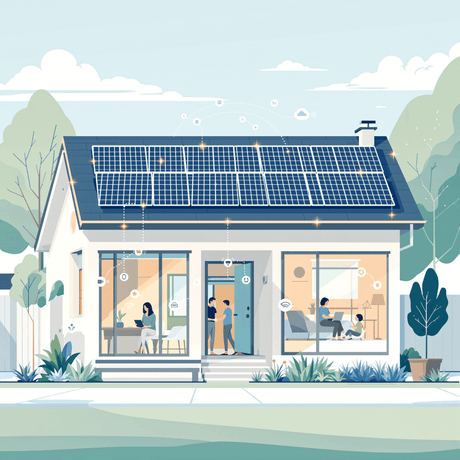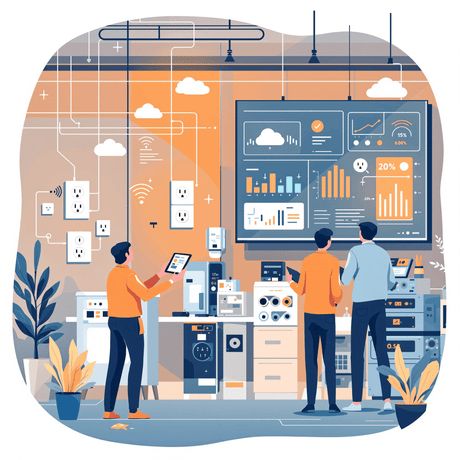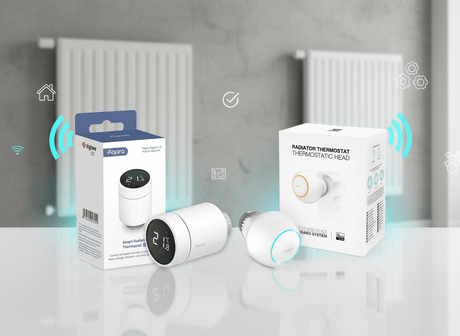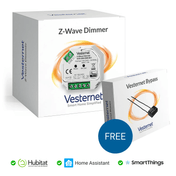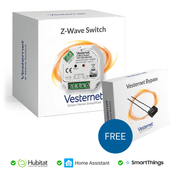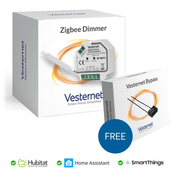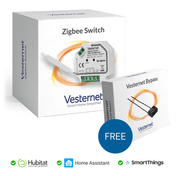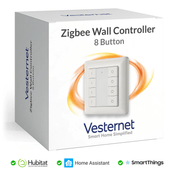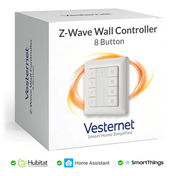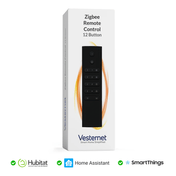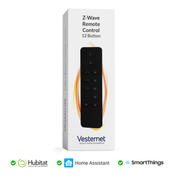The transition to renewable energy has become a cornerstone of modern homeownership, with solar technology advancing rapidly alongside dropping installation costs. When combined with smart home automation, solar systems deliver remarkable solar savings that extend far beyond basic electricity generation, creating comprehensive energy management solutions that maximise both environmental and financial benefits.
Smart home technology transforms solar energy systems from passive power generators into intelligent, responsive networks that continuously optimise energy usage patterns. Through automated load management, real-time monitoring, and predictive scheduling, homeowners can achieve solar panel savings that often exceed traditional solar installations by 20-30%, whilst enjoying unprecedented control over their energy consumption.
This comprehensive guide explores how solar integration with smart home technologies creates synergistic relationships between renewable generation and intelligent consumption. From fundamental system coordination to advanced automation strategies, we'll cover practical implementation steps that maximise solar energy savings whilst building a future-ready, efficient home ecosystem.
Understanding Solar Energy Systems and Smart Home Integration
Residential solar power systems convert sunlight into electricity through photovoltaic panels, typically generating peak power during midday hours when household energy demand is often lowest. The fundamental challenge lies in aligning energy production with consumption patterns, a problem that smart home integration solves through intelligent device coordination and automated load management.
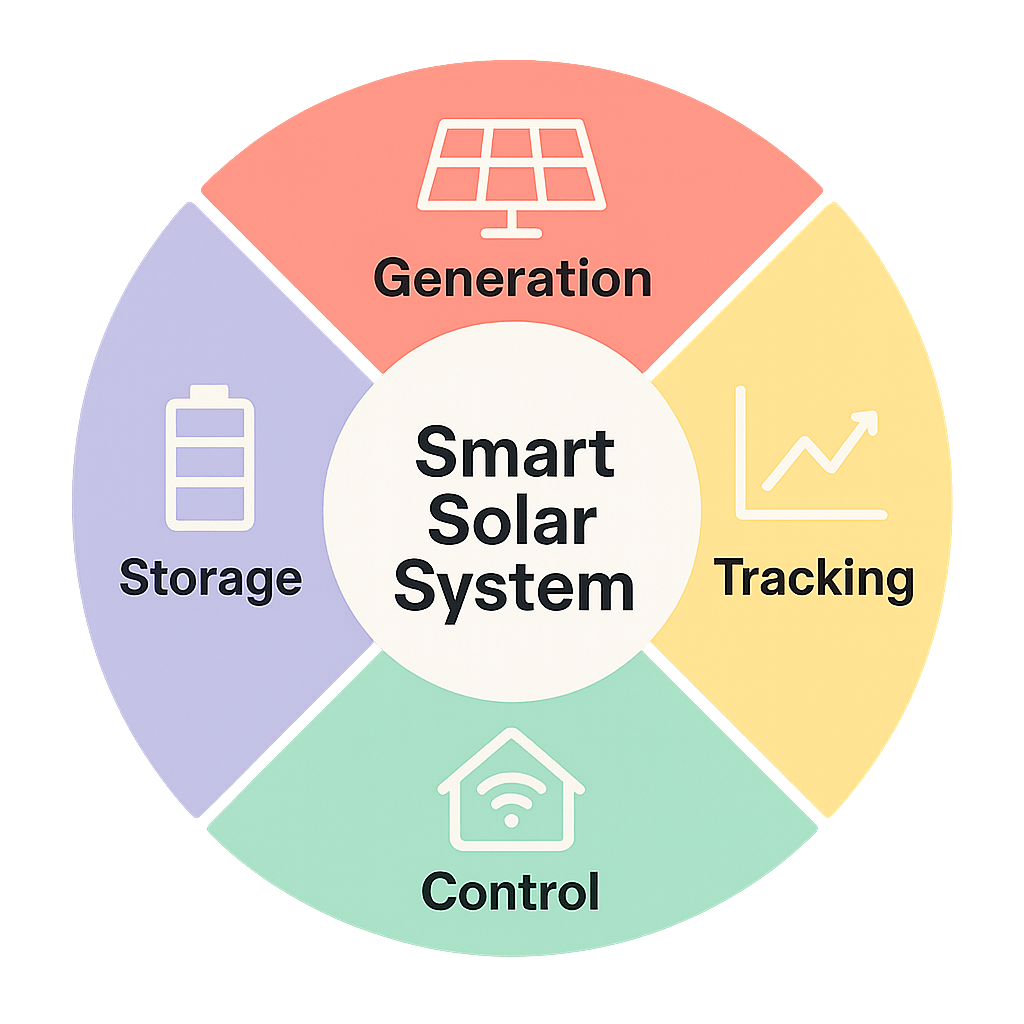
Key components of smart solar integration:
- Solar panels with microinverters or power optimisers for granular monitoring
- Smart energy storage systems that learn consumption patterns
- Intelligent monitoring hubs that coordinate device operations
- Automated switching systems that redirect power based on availability
The integration process begins with establishing communication between solar generation systems and smart home networks. Modern solar installations include monitoring capabilities that provide real-time data on energy production, whilst smart home hubs coordinate device operations to maximise solar energy utilisation during peak generation periods.
The Financial Benefits of Smart Solar Integration
Smart solar integration amplifies traditional solar savings through intelligent energy management that reduces grid dependency and optimises peak-hour energy usage. Homeowners typically see additional savings of £300-800 annually beyond standard solar installations, with payback periods shortened by 18-24 months through enhanced efficiency gains.
The financial advantages compound over time as smart systems learn household patterns and continuously refine energy allocation strategies. Advanced load management can shift energy-intensive activities to peak solar production hours, whilst intelligent storage systems maximise self-consumption rates and minimise expensive grid electricity purchases.
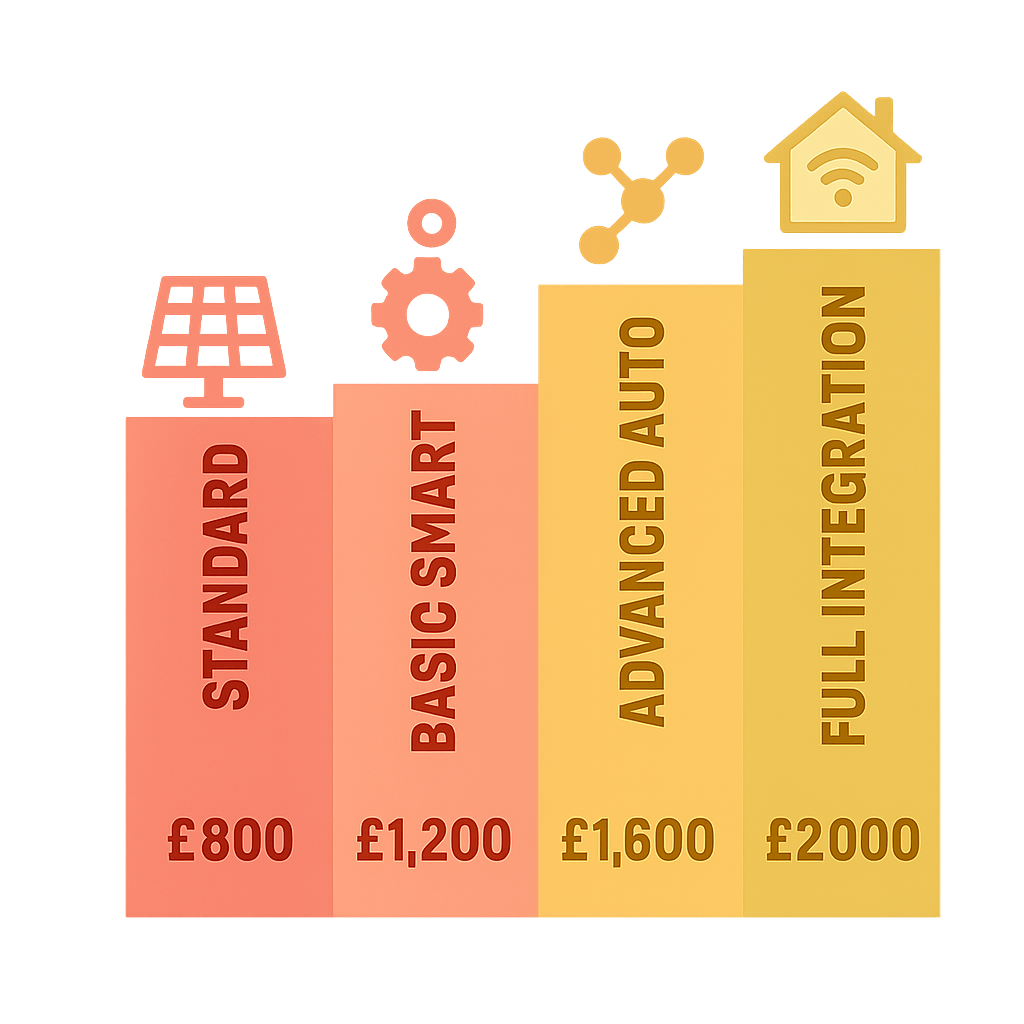
Quantifiable benefits of smart solar coordination:
- 25-40% reduction in grid electricity purchases through optimised timing
- 15-20% improvement in solar panel savings through efficient load matching
- £150-400 annual savings from automated peak-shaving strategies
- Enhanced property value averaging £2,000-5,000 above standard solar installations
Essential Smart Devices for Solar-Powered Homes
The foundation of effective solar integration rests on selecting smart devices that can respond to energy availability signals and coordinate operations for maximum efficiency. Energy monitoring sensors, intelligent switches, and automated controllers form the core infrastructure that enables dynamic energy management throughout the home.
Critical smart home components for solar optimisation:
- Smart energy monitors that track real-time generation and consumption
- Intelligent relays and switches for automated appliance control
- Smart thermostats with solar-aware scheduling capabilities
- Programmable smart plugs for flexible device management
- Advanced motor controllers for automated window coverings and ventilation
Device selection should prioritise compatibility with existing solar monitoring systems and the ability to receive external control signals. Z-Wave and Zigbee protocols offer reliable communication networks that can coordinate multiple devices whilst maintaining low power consumption and strong signal reliability throughout the home.
Energy Monitoring and Real-Time Usage Tracking
Comprehensive energy monitoring forms the intelligence backbone of any smart solar system, providing detailed insights into generation patterns, consumption trends, and optimisation opportunities. Modern monitoring solutions track energy flow at both circuit and device levels, enabling precise load management strategies that maximise solar energy savings.
Real-time monitoring systems reveal consumption patterns that aren't immediately obvious, such as standby power draws, peak demand periods, and opportunities for load shifting. This data becomes the foundation for automated decisions that continuously improve system efficiency without requiring manual intervention.
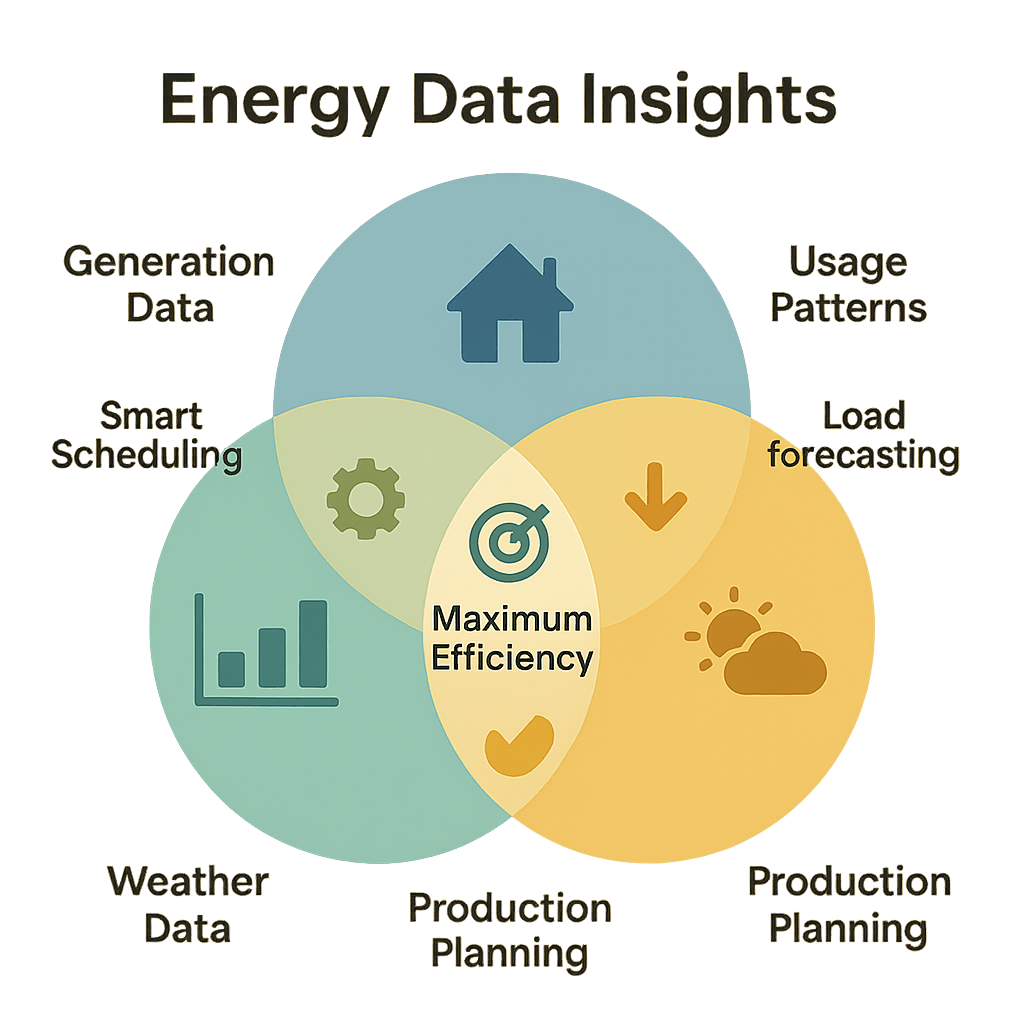
Essential monitoring capabilities for solar integration:
- Generation tracking with weather correlation and production forecasting
- Circuit-level consumption monitoring for detailed load analysis
- Historical data analysis to identify optimisation opportunities
- Alert systems for performance issues or unusual consumption patterns
Smart Load Management and Device Automation
Intelligent load management coordinates energy-intensive appliances with solar production peaks, automatically scheduling operations like washing machines, dishwashers, and water heaters during optimal generation periods. This strategic timing can increase solar panel savings by redirecting up to 60% of household energy consumption to solar-powered hours.
Automated load management strategies:
- Scheduled appliance operation during peak solar production hours
- Priority-based device coordination when generation is limited
- Automatic load shedding during low production periods
- Smart water heater control for thermal energy storage
Smart switches and relays enable remote control of high-consumption devices, whilst programmable smart plugs provide flexible automation for smaller appliances. The key lies in creating cascading priority systems that ensure essential services maintain power whilst non-critical loads adjust automatically to available solar generation.
Climate Control Optimisation with Smart Thermostats
Climate control typically represents 40-60% of household energy consumption, making smart thermostats essential components for maximising solar energy savings. Advanced thermostats can pre-condition homes during peak solar production, using excess generation to heat or cool spaces whilst reducing grid dependency during expensive peak-rate periods.
Solar-aware climate control extends beyond basic scheduling to include predictive algorithms that consider weather forecasts, occupancy patterns, and thermal mass characteristics. These systems can effectively store thermal energy during peak production hours, reducing the need for grid electricity during evening and morning periods.
Advanced climate control strategies:
- Pre-cooling during peak solar generation to reduce afternoon grid consumption
- Thermal storage techniques that maximise solar energy utilisation
- Adaptive scheduling based on weather forecasts and generation predictions
- Zone-based control that optimises comfort whilst minimising energy waste
Advanced Automation: Motor Controllers and Window Management
Smart motor controllers enable automated window coverings, garage doors, and ventilation systems that respond to solar conditions and energy availability. Automated blinds can reduce cooling loads during peak sun hours whilst maximising natural light when heating is beneficial, creating passive energy management that complements active solar generation.
Motor controller applications for solar optimisation:
- Automated blind control for passive solar heating and cooling management
- Ventilation fan coordination with temperature sensors and solar availability
- Garage door scheduling to coincide with electric vehicle charging
- Skylight and window automation for natural lighting optimisation
These advanced systems work in coordination with climate control and energy monitoring to create comprehensive environmental management that reduces energy consumption whilst maximising comfort. The integration of multiple motor controllers can create sophisticated scenarios that respond to changing conditions throughout the day.
Implementation Planning and Best Practices
Successful smart solar integration requires systematic planning that considers existing infrastructure, energy usage patterns, and expansion capabilities. Begin with comprehensive energy monitoring to establish baseline consumption patterns, then gradually introduce automated devices that can respond to solar generation signals.
The implementation process should prioritise high-impact devices first, typically starting with smart thermostats and water heater controllers before expanding to smaller appliances and convenience devices. This phased approach allows systems to learn and adapt whilst providing immediate solar savings benefits.

Implementation sequence for optimal results:
- Install comprehensive energy monitoring systems to establish baselines
- Add smart thermostats and water heater controllers for immediate impact
- Integrate major appliance automation through smart switches and relays
- Expand to advanced motor controllers and environmental automation
- Continuously optimise based on performance data and seasonal patterns
Conclusion
The integration of solar energy systems with smart home automation represents a transformative approach to residential energy management that delivers exceptional solar savings through intelligent coordination and automated optimisation. By combining renewable generation with responsive consumption management, homeowners can achieve efficiency gains that substantially exceed traditional solar installations whilst building resilient, future-ready energy systems.
Beginning your smart solar journey requires only basic energy monitoring and a few key automated devices, with systems designed to expand and adapt over time. Start with smart thermostats and energy monitors to establish the foundation, then gradually incorporate additional automation that maximises your solar energy savings through coordinated device management and intelligent load scheduling.
Ready to optimise your solar energy savings with smart home technology? Explore our comprehensive range of energy monitoring systems, intelligent switches, smart thermostats, and automation devices. Our expert team is available to help you design the perfect smart solar integration for maximum efficiency and savings.


